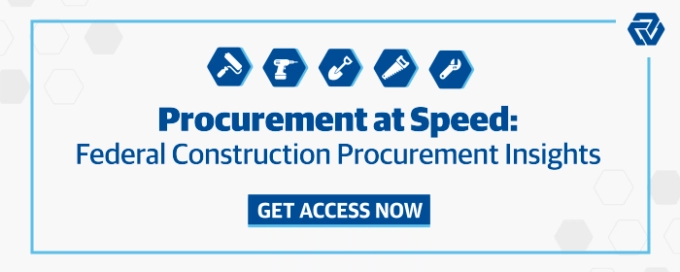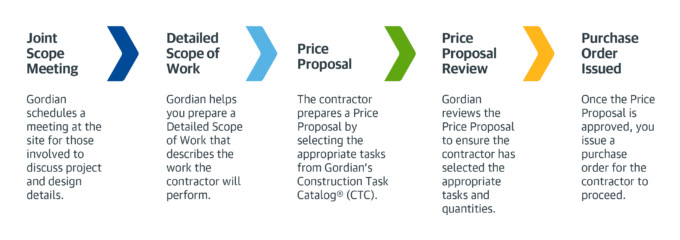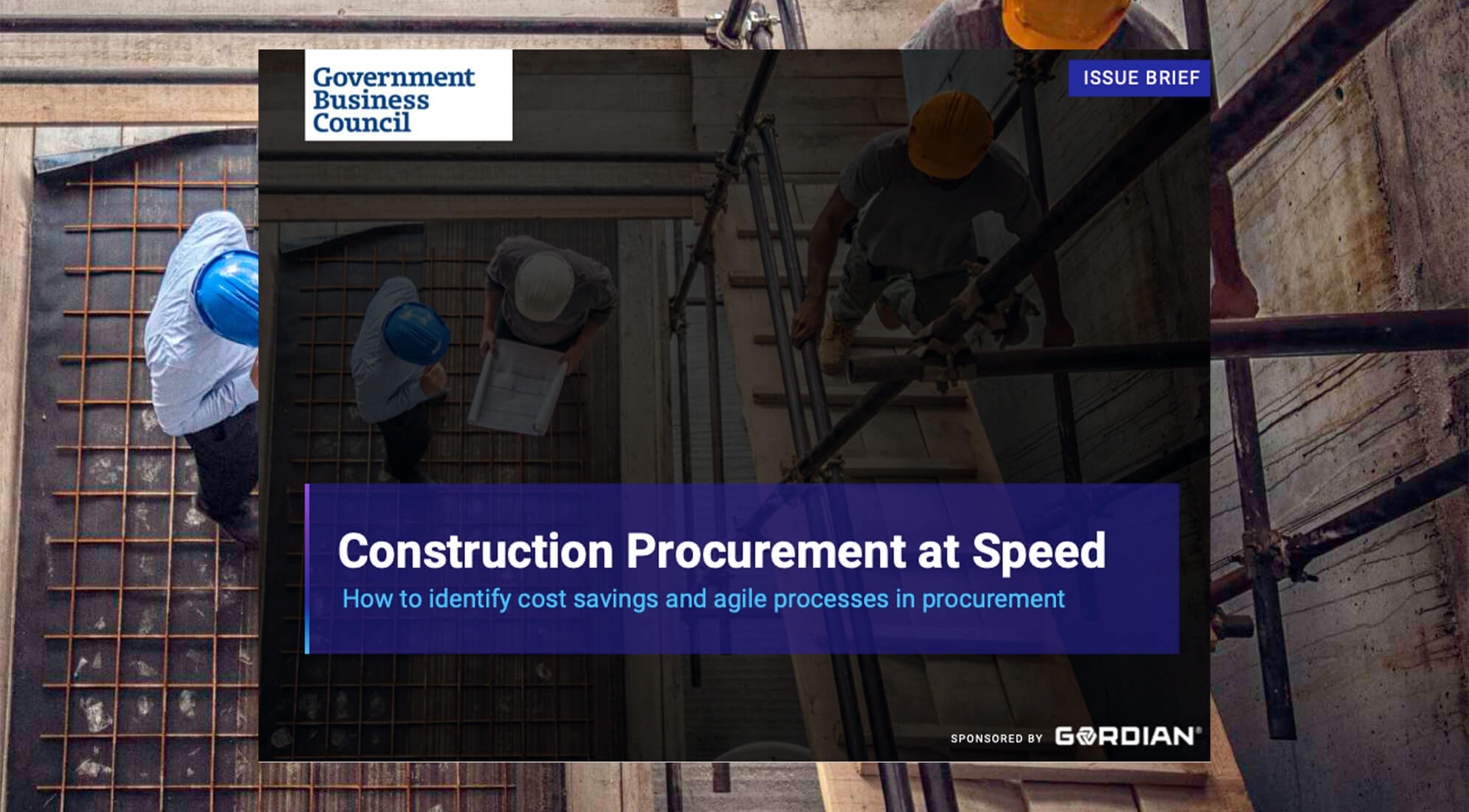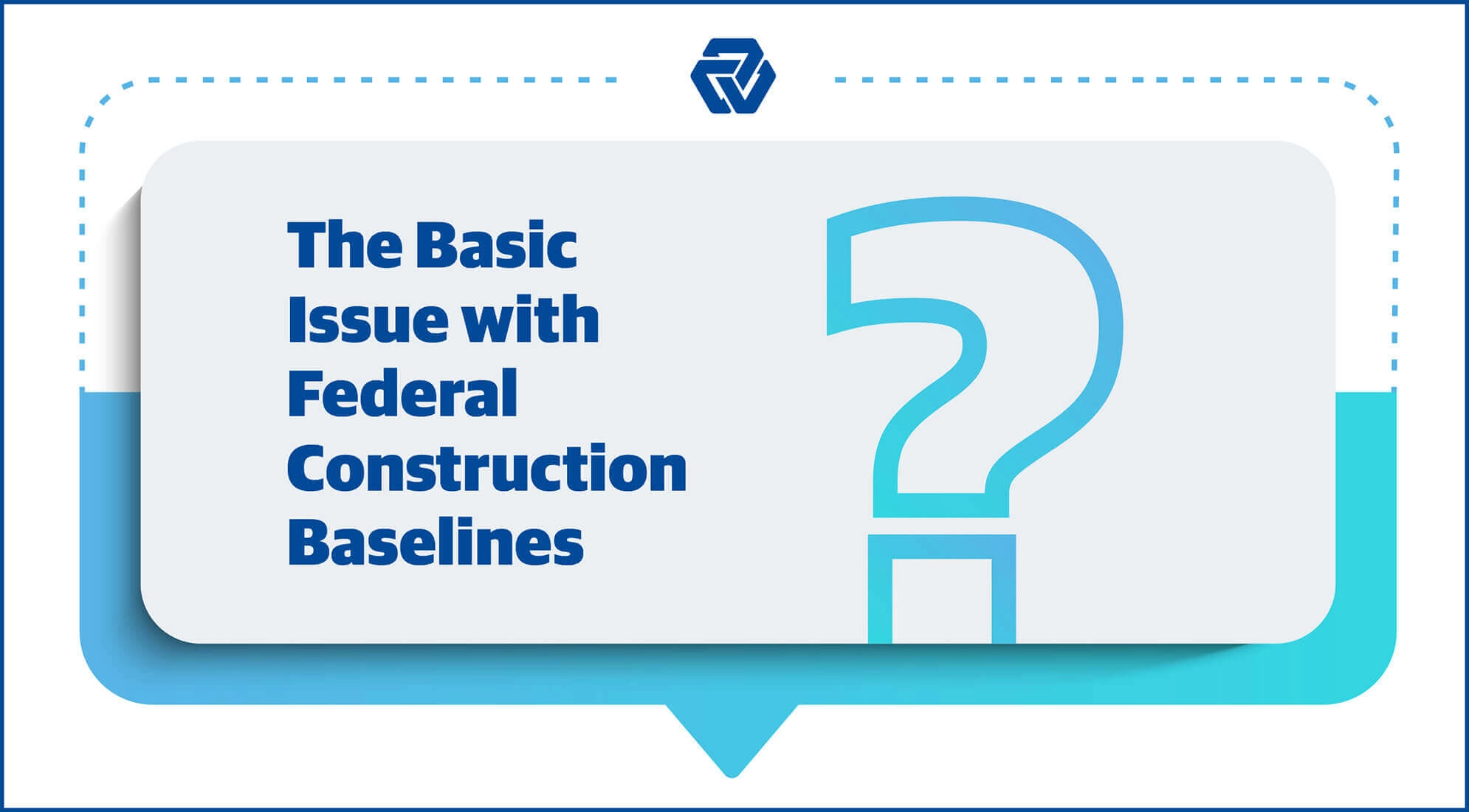Federal leadership has placed a crescendoing focus on the sustainment, renovation and maintenance (SRM) of Federal and Military facilities over the last decade. This strategic shift in priorities should, in theory, allow existing facilities to be renewed via more frequent, smaller projects for less than the cost of constructing new facilities. The resulting savings can then be funneled into either additional SRM projects or separate budget areas.
This is not to say that the Federal construction spending is being reduced. The pandemic year aside, Federal spending on contracting services has continually grown. Such spending rose 6% from fiscal year 2019 to 2020, and signs point toward that pattern continuing through the coming years.
The combination of these factors should add up to more work for contractors working on Federally funded projects. More money allows for greater overall spending, and a focus on SRM divides that spending across a great volume of projects that can be completed in less time.
But this isn’t a guaranteed result. One large obstacle stands in the way of it coming to fruition and contractors reaping the rewards: the issue of best value source selection.
Learn more about the challenges facing federal construction procurement and improvements that can be made to the process in our latest report, Construction Procurement at Speed, co-authored by Government Business Council.
What is Best Value Source Selection?
Best value source selection refers to the practice of awarding a contract based on the value of the services that the Federal government will receive from the awarded contractor. This may, at first glance, seem similar to the common procedure of awarding contracts to the lowest responsive bidder. But the difference between the two is much more than semantics.
To make a best value source selection, a project owner must take several factors into account when awarding a contract. Price is, of course, an important factor to include in an owner’s consideration – no owner wants to pay too much for any project. But price can’t be the only, or even the majority, factor. The reasonableness of the bid and estimated timeline must be considered. As should the contractor’s history of quality work. And don’t forget their track record of business relationships.
The goal is for project owners to create a profile of value they’d like to receive from a contractor, identify which bidder most closely matches that profile and award the contract accordingly. At times, the lowest bidder may end up offering the greatest value to the owner, but that certainly won’t be the case all, or perhaps even most, of the time.
The Value of Best Value Source Selection
It could be presumed that consistently awarding contracts to the lowest bidder would allow the Federal government to save funds for additional projects. The problem with this thinking is that a low price tag, which looks like savings on the surface, may be indicative of poor quality work or a poor understanding of the project scope.
Poor quality work will end up costing more in the end, because of the rework needed to replace or renew the structure. A poor understanding of scope, will lead to budget overruns as the scope expands during the construction phase.
Choosing the lowest bidder doesn’t mean you’re spending less in the end. Choosing the best value bidder, one with a proven track record of quality and competence, will give projects a better chance of being completed on time, on budget and to scope. As an added value, the time saved on rework, change orders, administrative work and unnecessary communication could also lower the final price tag of a project.
Federal Contract Awarding Practices
Federal agencies are required by law to secure pricing for contracts that is “fair and reasonable.” Along with that, agency heads, who are responsible for awarding the contract, are instructed in FAR regulations to select the “source whose proposal [brings] the best value to the government.”
Unfortunately, these instructions are not always followed and, instead, agency heads are quick to turn to the lowest bidder. Selecting the lowest bidder may provide the government with a fair price, but best value source selection will ensure both requirements are met. However, the volume of bids needed to determine a best value source is often lacking for Federal projects.
In 2015, 44% of Federal project contracts were awarded uncompetitively due to a lack of bids. For many of these projects, only one bid was submitted, and a single bid cannot provide a best value selection process. Consequently, uncompetitive bidding does not fulfill the requirements for a “fair and reasonable” contract.
Across agencies in government, the practice of competitive pricing has remained stagnant and not increased over the years. With an increase in projects on the horizon as emphasis continues to be placed on SRM work, a better method of eliciting bids for Federal projects is needed. The solution, it turns out, could be a change in methods for procuring contracts.
Increasing Competitive Bidding with IDIQ
The Indefinite Delivery/Indefinite Quantity (IDIQ) procurement method establishes a single contract used for multiple minor projects that require no to minimal design, removing the need to bid each project individually. This single bid contract structure, paired with a Unit Price Book (UPB), enables agencies to significantly reduce procurement time and eliminate change order negotiations, because work items are already preset and pre-priced.
While having a single contract for multiple projects may seem like it would reduce competitive bidding, it actually increases competitiveness. Many of the projects completed through IDIQ contracts are smaller to medium sized projects – the type that normally would not illicit many bids from contractors who deem the time and effort required to package a bid not worth the low return on investment. But IDIQ methods bundle those projects into one, long-term contract, increasing the value of the contract and, therefore, the appeal to contractors.
Additionally, the presence of the UPB means that the contractor knows and has agreed to the sum they’ll be paid for each task needed to complete a project based on the coefficient proposed in their Request for Proposal (RFP). That type of clarity up front, along with negating the need of having to negotiate change orders, creates a smoother path for the contractor to complete their work without worrying about budget or relational strains. IDIQ methods offer contractors more work with fewer headaches – an extremely appealing prospect.
IDIQ Time and Cost Savings
IDIQ use has been steadily increasing over the years. From 2011 to 2015, between $130 to $180 billion was allocated by the government to IDIQ obligations. From 2015 to 2017, according to the Government Accountability Office (GAO), that number jumped to nearly $200 billion each year. This is because, along with its benefit to contractors, IDIQ has been tried and proven to bring notable cost and time savings to the government.
The structure of IDIQ contracts minimizes administrative work by using one long-standing contract instead of circling back to the beginning of the procurement process each time a new construction project is needed. Reducing administrative work can help speed up procurement to as low as 45 to 60 days, ideal for agencies looking to meet urgent construction needs or realize additional cost savings.
Gordian is the leading provider of Job Order Contracting (JOC) services, an innovative IDIQ procurement solution, for government construction. Our unique five-step JOC process, seen above, is proven to increase cost and time savings for Federal agencies.
Reducing the time devoted to administrative work also brings cost savings by cutting back on transaction costs and improving schedule performance. A report sponsored by the United States Army Corps of Engineers (USACE) found that IDIQ procurement improved relationships with contractors, boosted contractor performance and streamlined the development of the scope of work, which can all contribute to more cost-effective project outcomes.











